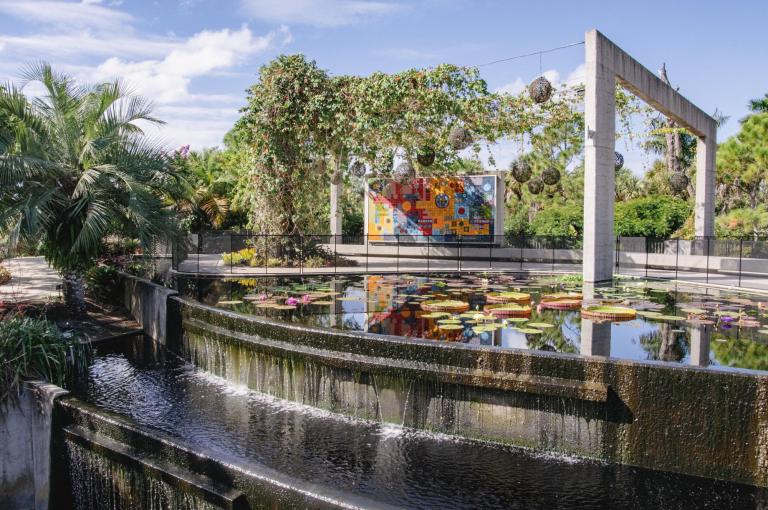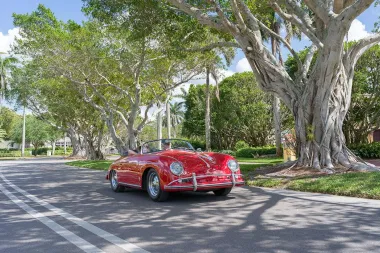The Dry Season Vs The Wet Season On Florida’s Paradise Coast

When you think of seasons, you might immediately imagine the traditional four: summer, fall, winter, and spring. However, on Florida’s Paradise Coast, our concept of seasons is a little different. In fact, we don’t typically experience cold winters or colorful fall foliage. Instead, you’ll find two completely opposite seasons here: the dry and wet seasons.
The main difference between these seasons, especially in the Everglades, has to do with the water levels (and, of course, the rain!) In this article, we'll delve into the characteristics of each season and the best activities to enjoy during these times. Moreover, we’ll provide handy tips for making the most of your visit in both the dry and wet seasons.
WHAT IS THE DRY SEASON?
The dry season on Florida's Paradise Coast spans from November through April and is considered the best time to visit for most outdoor activities. With lower temperatures, reduced humidity, better chances of spotting wildlife, and fewer mosquitoes (thanks to less standing water), hiking, camping, and paddling become even more enjoyable. Naturally, these ideal conditions make the dry season the most popular time to visit our beautiful parks and preserves, with most visitors arriving between December and March.
One of the most intriguing aspects of the dry season is its impact on wildlife. Due to the lower water levels, animals flock around the remaining water sources, making it a fantastic time for wildlife watching. Birds, in particular, are easier to spot, as fish and other prey are concentrated in smaller areas. Plus, the bird nesting season tends to coincide with the dry season.
You can also expect milder temperatures, ranging between the 50s and the 70s, during the dry season. While you may still experience occasional thunderstorms, they’re much less frequent compared to the wet season.
WHAT TO DO DURING THE DRY SEASON
The dry season offers ideal conditions for outdoor adventures such as hiking, birdwatching, airboat rides, paddling, and ranger-led swamp walks. Trails are more accessible and less muddy, making it a perfect time for hiking enthusiasts to explore places like Collier-Seminole State Park and the Gordon River Greenway.

If you want to maximize your chances of seeing wildlife in their natural habitats, plan your visit during the dry season. Bird watchers will love Corkscrew Swamp Sanctuary, where migratory and wintering birds are plentiful. As wildlife gathers around water sources, airboat rides become even more exciting with easier alligator sightings. Additionally, the chances of spotting manatees are higher during this season!
Kayaking, canoeing, and stand-up paddleboarding are also popular during this time of year. For example, you can paddle the Ten Thousand Islands, the Turner River, and Rookery Bay, keeping an eye out for dolphins, manatees, and birds like roseate spoonbills, herons, or osprey.
For a more guided experience, ranger-led swamp walks in Big Cypress National Preserve and Fakahatchee Strand Preserve State Park are a must. The rangers wade with you through the swamp, providing first-hand insights into the local flora and fauna, making the experience both informative and enjoyable.

DRY SEASON TIPS
Although mosquitos aren’t as much of a problem during the dry season, visitors should still be prepared for occasional insects, particularly at dawn and dusk. With this in mind, we always recommend traveling with some mosquito repellent!
Another important suggestion is that since this is the peak tourism season, campgrounds tend to fill up quickly. So, make reservations well in advance–we’re talking months, not weeks–for the most popular camping sites.
Wear moisture-wicking clothing to stay comfortable in the warm weather and bring a reusable water bottle. Don’t forget sun protection, either! Bring hats, sunglasses, and plenty of sunscreen to guard against the sun’s rays while you enjoy the beautiful weather and outdoor activities.
WHAT IS THE WET SEASON?
The wet season on Florida's Paradise Coast–running from May to October–is characterized by periods of rain, higher water levels, and lush landscapes. During this period, the Everglades, in particular, transform into a verdant oasis each year.
While the rain rejuvenates the flora, it also causes wildlife to disperse and increases mosquito activity, making some activities less enjoyable during this season. For example, more mosquitoes and higher humidity can make exploring trails less comfortable. There are also fewer tours available, and some attractions may close due to bad weather, especially since hurricane season starts in June.
Despite these challenges, there are significant perks to visiting during the wet season. With fewer tourists, you can have the most popular natural attractions all to yourself, like the Ten Thousand Islands National Wildlife Refuge. Plus, the landscape is at its greenest, offering unique opportunities for photographers and the chance to see rare orchids and native bromeliads in full bloom.

WHAT TO DO DURING THE WET SEASON
During the wet season on Florida's Paradise Coast, visitors can enjoy beautiful landscapes with fewer crowds. Paddlers benefit from less competition on the waterways and experience higher water levels, creating a truly immersive adventure.
Photographers might have a more challenging time capturing wildlife during this time of year. However, the dramatic storm skies and blooming flora are undoubtedly photogenic!
Plus, it’s a great time of year to visit the Naples Botanical Garden. During June and July is also when you can witness the rare Ghost Orchid bloom at places like Fakahatchee Strand Preserve State Park and Audubon’s Corkscrew Swamp Sanctuary.

WET SEASON TIPS
Visiting Florida's Paradise Coast during the wet season requires a bit of preparation. Due to frequent afternoon thunderstorms, we recommend packing a lightweight rain jacket and waterproof gear. Additionally, waterproof footwear is essential for muddy trails.
Since mosquitos are quite active during this time of year, you won’t want to forget insect repellent or even mosquito netting. Of course, wearing long sleeves and pants is an easy way to help minimize bites. Stay hydrated and take breaks to avoid overheating in the high humidity. It's also wise to check weather forecasts regularly, as conditions can change quickly!
We hope this article has given you a clear understanding of the differences between the dry and wet seasons on Florida’s Paradise Coast. Whether you prefer mild weather and wildlife viewing in the dry season or lush flora during the wet season, Only Paradise will do.
Explore More of Paradise Coast

Driven by Passion: Kazuki Furusawa and the GT-R Legacy in Paradise

Driving It Forward: Tom O’Riordan on Cars on 5th and the Naples Automotive Experience

Top Scenic Drives on Florida’s Paradise Coast for Car Lovers

Inside the Naples Car Scene with Collector Pat Mullaney

Porsche Country: Porsche Collectors Lisa and John on Life in Naples
